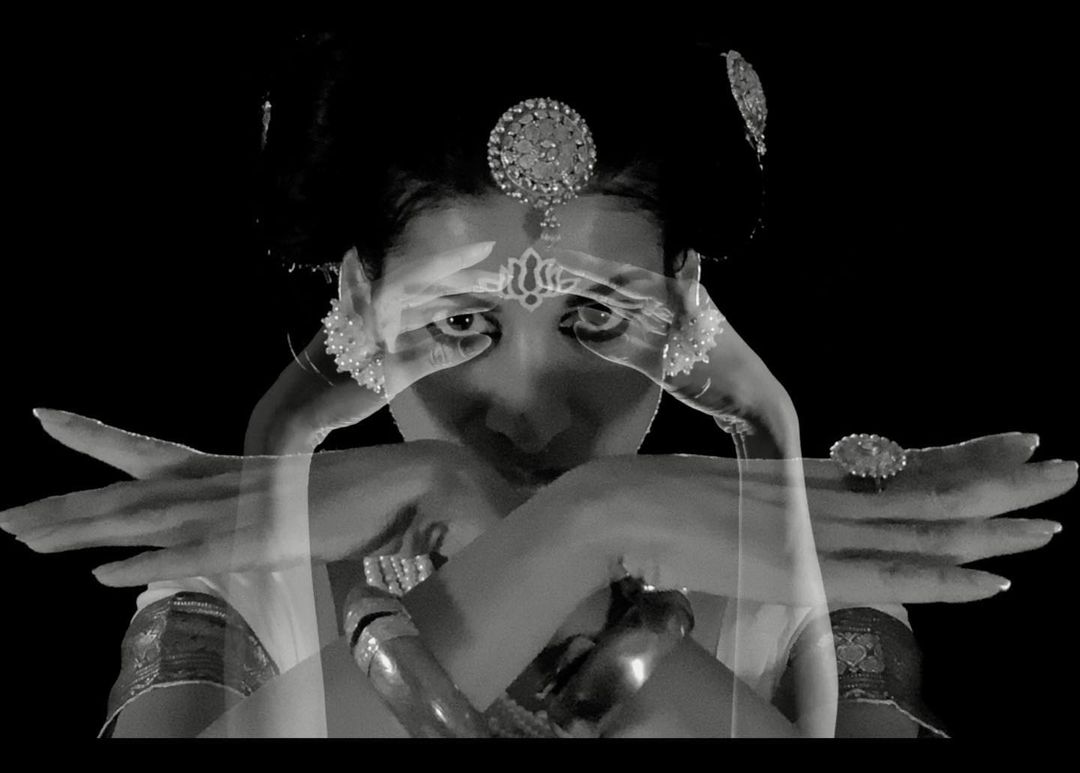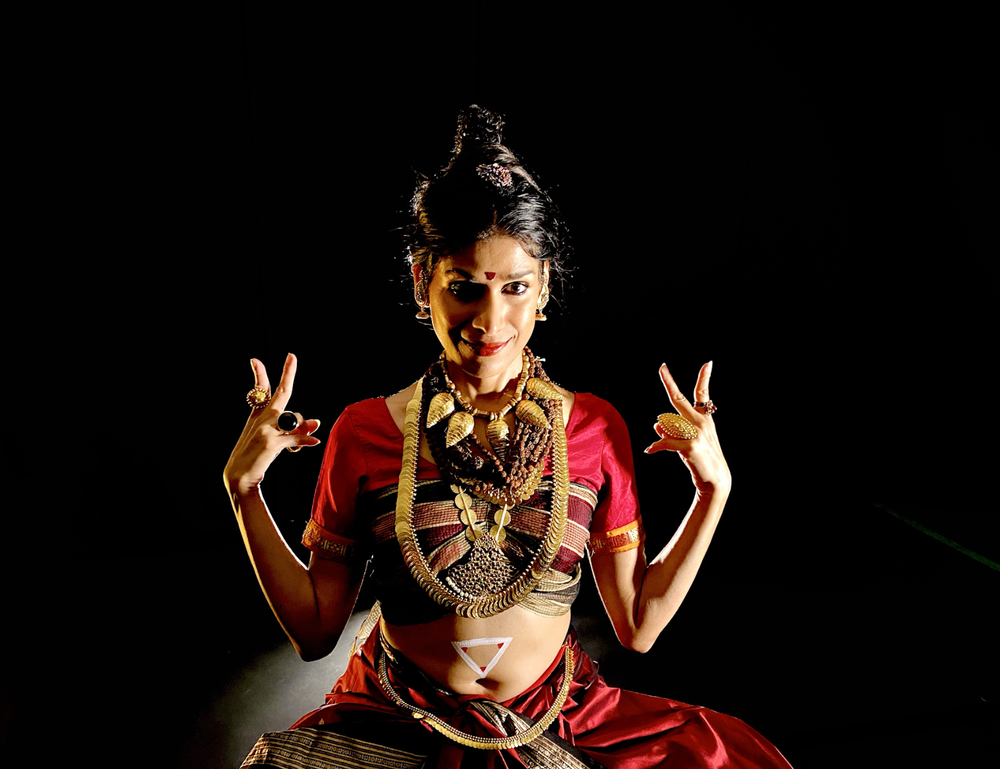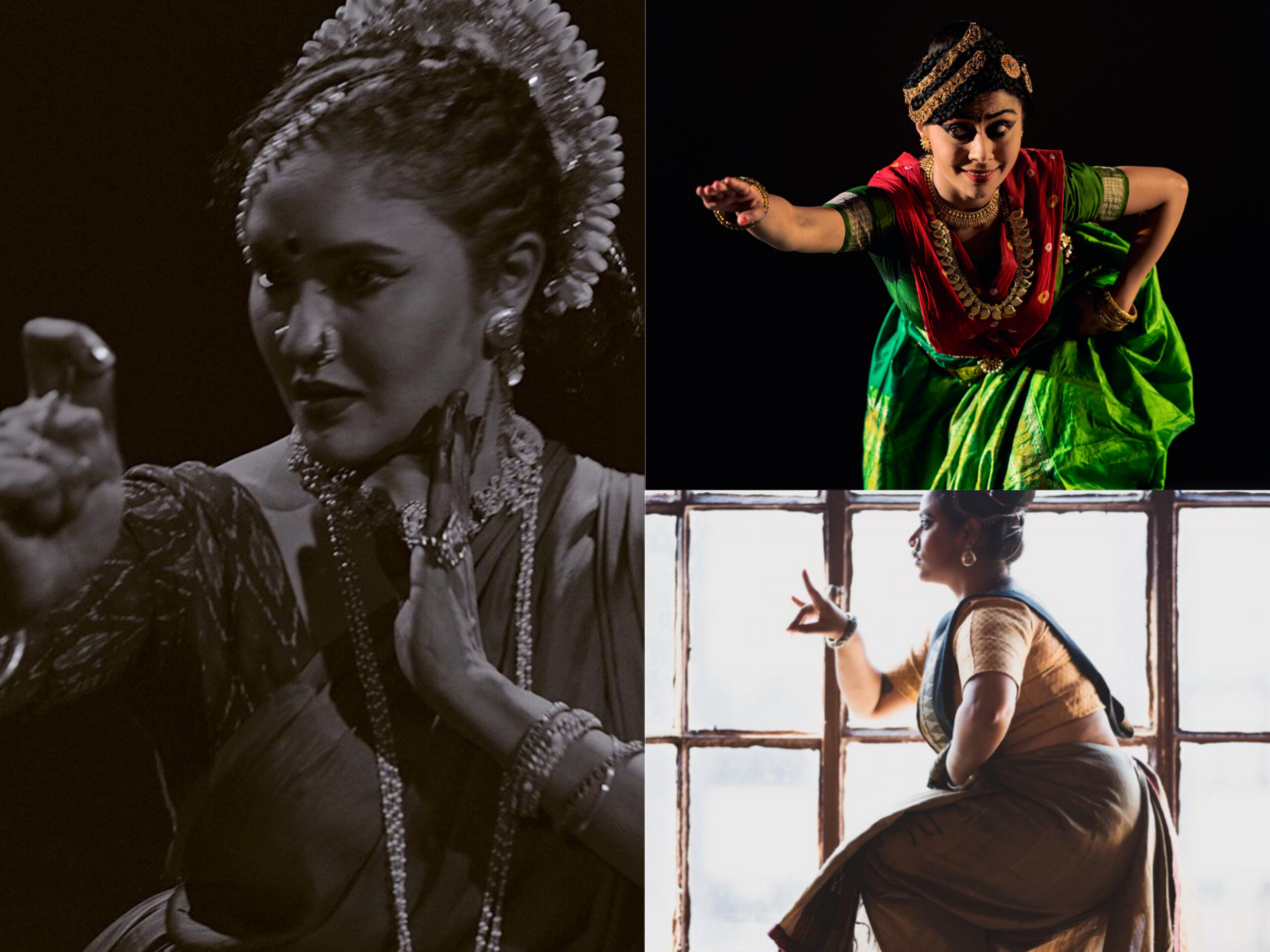In The Gaze of the Creator (film)
A work created for a virtual film festival in Black and white, entitled “Sill point Expanding” in 2020, this short film depicts the story of Brahma who covets his own daughter, The daughter (goddess Saraswati) is then transformed into a fierce goddess. The entire focus is on the Gaze and transformation. This idea of the Creator’s Gaze was inspired by the story my grandmother told me as a child but at the time I failed to understand its inner meaning. Nor did it become a source of inspiration, until I began to develop the Shilpanatanam vocabulary.
Chinnamasta (film)
This work was commissioned for the ‘Grotesque Goddesses’ festival held in December 2021. Chinnamasta is perhaps the most fearsome of all ferocious goddesses in Hindu Mythology. The dance piece turns on her opposite aspects: the beautiful and compassionate one; and the ferocious one that transcends all boundaries of custom and morality. The cause for the metamorphosis of the serene devi to the ferocious one, is the God of Love, Madana, who symbolizes therefore Chinnamasta’s momentary surrender to Desire. Realizing that she was led astray by her own surrender to sensory pleasures, Chinnamasta proceeds to destroy that which caused the momentary distraction. This dance unfolds the transformation from serene to sensuous and from sensuous to fierce. The Devi standing over the copulating couple of Madana and his consort Rati in the end part of the film symbolizes her conquest over desire. But that is not enough. In the final act Chinnamasta cuts off (Chinna) her own head (Masta) and destroys the sense of self-identity that ties her to here and now, and her distinctive self.
Tridha: a Trilogy for Aalokam Dance co.
This three-part dance production was inspired by three well-known sculptures of three women that have served as a decorative motif in many temples across India” a woman with a parrot on her shoulder, a woman with a bow and arrow and a woman gazing at her own image in a mirror. Unlike many other temple sculptures, these three sculptures carry no storyline and no mythic reference. Maya Kulkarni wrote the three dances’ narratives, each with a magical twist and set them to Shilpanatanam.


